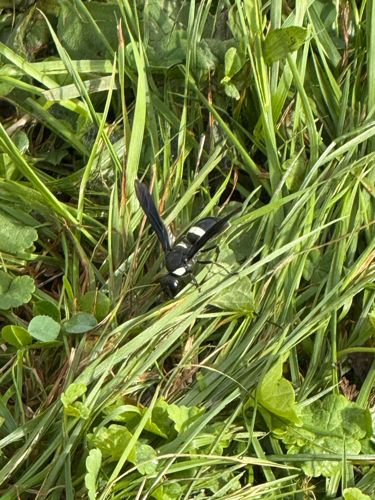Scolia Wasp
Scientific Name: Scolia dubia
Order & Family: Hymenoptera, Scoliidae
Size: Typically 1.5 to 2.5 cm (0.6 to 1 inch) in length.

Natural Habitat
Found in open, sunny areas, often in gardens, meadows, and lawns where its host beetles are present.
Diet & Feeding
Adults feed on nectar and pollen from various flowers. Larvae are parasitic on the grubs of scarab beetles (e.g., Japanese beetles, May beetles).
Behavior Patterns
Adults are often seen flying low over lawns and open areas in search of host grubs for their offspring. The female wasp digs into the soil to locate a beetle grub, stings and paralyzes it, and then lays a single egg on the grub. The wasp larva then consumes the paralyzed beetle grub. They are solitary wasps and do not form colonies.
Risks & Benefits
Potential risks are minimal; while they can sting, they are generally not aggressive unless provoked. Their stings are typically less painful than those of yellow jackets or hornets. Benefits include their role as a natural biological control for pest scarab beetle grubs, which can cause significant damage to lawns and garden plants. They also act as pollinators while feeding on nectar.
Identified on: 9/21/2025